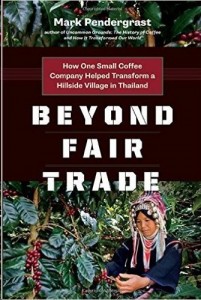Here are another five industry-sponsored studies with results that can be used for marketing purposes (otherwise, what’s the point?).
Effects on childhood body habitus of feeding large volumes of cow or formula milk compared with breastfeeding in the latter part of infancy David Hopkins, Colin D Steer, Kate Northstone, and Pauline M Emmett. Am J Clin Nutr 2015;102:1096–103.
- Conclusion: “The feeding of high volumes of cow milk in late infancy is associated with faster weight and height gain than is BM feeding. The feeding of bottle-fed infants with high volumes of cow milk in late infancy may have a persisting effect on body habitus through childhood.” The authors point out “Our findings strengthen the current American Academy of Pediatrics and United Kingdom Department of Health guidelines, which stress the need to not introduce cow milk as a main drink before 12 mo of age. Parents should be advised about the appropriate volume of milk to offer their children once complementary feeding is established.”
- Funding: The research, although specifically funded by Wyeth Nutrition, was carried out independently. DH previously received funding from Pfizer Nutrition Ltd. KN and PME have, from time to time, received research funding, and PME has received consultancy funding from Pfizer Nutrition Ltd., Plum Baby, and Danone Baby Nutrition (Nutricia Ltd.). PME currently receives research funding from Nestlé Nutrition.
- Comment: The study finds that differences between the growth of children fed breast milk or formula disappear by age two. Infants fed cow milk grew significantly faster than both of the other groups.
Effects of tree nuts on blood lipids, apolipoproteins, and blood pressure: systematic review, meta-analysis, and dose-response of 61 controlled intervention trials. Liana C Del Gobbo, Michael C Falk, Robin Feldman, Kara Lewis, and Dariush Mozaffarian. Am J Clin Nutr December 2015, vol. 102 no. 6 1347-1356.
- Conclusions: Tree nut intake lowers total cholesterol, LDL cholesterol, ApoB, and triglycerides.
- Funding: LCDG and DM received modest ad hoc consulting fees from the Life Sciences Research Organization (LSRO) in Bethesda, MD, to support this study. MCF, RF, and KL received payment through LSRO (<5% of gross income) to conduct a review of nuts and cardiovascular health outcomes, which was funded through a contract with the International Tree Nut Council (ITNC).
Safety and efficacy of cocoa flavanol intake in healthy adults: a randomized, controlled, double-masked trial Javier I Ottaviani, Marion Balz, Jennifer Kimball, Jodi L Ensunsa, Reedmond Fong, Tony Y Momma, Catherine Kwik-Uribe, Hagen Schroeter, and Carl L Keen. Am J Clin Nutr December 2015, vol. 102 no. 6 1425-1435
- Conclusion: The consumption of CFs [cocoa flavanols] in amounts up to 2000 mg/d for 12 wk was well tolerated in healthy men and women.
- Funding: Supported in part by an unrestricted gift from Mars Inc. The company also provided the food-grade, standardized test materials and authentic analytical standards as gifts…. JIO, MB, CK-U, and HS are employed by Mars Inc., a company with long-term research and commercial interests in flavanols and procyanidins. CLK has received an unrestricted research grant from Mars Inc. and is the current holder of the Mars Chair in Developmental Nutrition. In addition, CLK has consulted for other food companies and government agencies with an interest in health and nutrition, as well as in phytonutrients, including flavanols and procyanidins.
Psyllium fiber improves glycemic control proportional to loss of glycemic control: a meta-analysis of data in euglycemic subjects, patients at risk of type 2 diabetes mellitus, and patients being treated for type 2 diabetes mellitus. Roger D Gibb,*, Johnson W McRorie Jr., Darrell A Russell, Vic Hasselblad, and David A D’Alessio. Am J Clin Nutr December 2015 , vol. 102 no. 6 1604-1614.
- Conclusion: These data indicate that psyllium would be an effective addition to a lifestyle-intervention program.
- Funding: RDG, JWM, and DAR are full-time employees of P&G, which markets a psyllium product. DAD has received an unrestricted research grant from P&G. VH has received research funding from P&G.
Fresh Pear Consumption is Associated with Better Nutrient Intake, Diet Quality, and Weight Parameters in Adults: National Health and Nutrition Examination Survey 2001-2010. O’Neil CE, Nicklas TA, Fulgoni VL (2015) J Nutr Food Sci 5: 377. doi:10.4172/2155-9600.1000377
- Conclusion: Compared to non-consumers [of pears], consumers were 35% less likely to be obese (p<0.05). Fresh pears should be encouraged as a component of an overall healthy diet.
- Funding: Partial support was received from the United States Department of Agriculture/ Agricultural Research Service (USDA/ARS)…Partial support was also received from Pears Bureau Northwest.
- Comment: I’m guessing the same result could be obtained by looking at consumption of any other fruit. And to prove my point that this is about marketing, here’s the press release.




